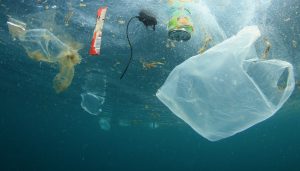Microplastics Found in Antarctic Sea Ice Samples for First Time, Scientists Say
For the first time, microscopic plastic pollution has been found in Antarctic sea ice samples collected more than a decade ago, suggesting that microplastic concentrations in Southern Sea ice may be higher than previously believed.
A total of 96 microplastic particles from 14 different types of polymer were discovered in an ice core sample collected from Casey Station located in East Antarctica in 2009. As ice freezes in the region, scientists believe that small pieces of plastic may become trapped in ice, which acts as a reservoir for pollution until it is released again by ice melt.
Plastic particles measuring less than 5 millimeters have become common in remote marine habitats, from nearly every corner of the world to the bellies of the world’s most remote organisms. Since researchers began tracing microplastics six years ago, they have found plastic pollution in Antarctic surface waters and sediments as well as in Arctic sea ice. Though these regions are remote, concentrations of microplastics have been found to rival those found in more urban settings.
An average of nearly 12 particles of microplastic were found in every examined liter of coastal land-fast sea ice, which is sea ice “fastened” to the coastline, according to the Polar Science Center. This number is slightly lower than what previous studies in polar regions have detected, but the overall size of each was larger, which indicate that the pollution came from local sources as it had “less time to break down into smaller fibers than if transported long distances on ocean currents.”
“Local sources could include clothing and equipment used by tourists and researchers, while the fact that we also identified fibres of varnish and plastics commonly used in the fishing industry suggests a maritime source,” lead study author Anna Kelly said.
“It is worth noting that plastic contamination of West Antarctic sea ice may be even greater than in our ice core from the East, as the Antarctic Peninsula hosts the bulk of the continent’s tourism, research stations and marine traffic,” said Kelly.
The researchers conclude that the findings present a “crucial need for stringent methods” when it comes to both to recovering and measuring microplastic particles from polar regions.
Read the full and original article at EcoWatch.com



